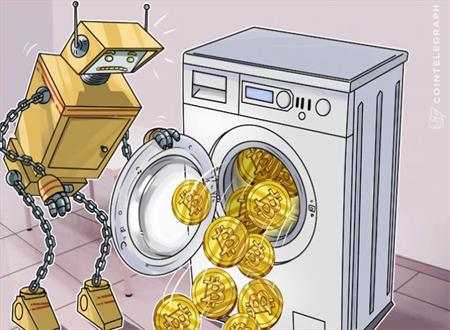Is the chain chain the key to overcoming money against money laundering?
Is the chain chain the key to overcoming money against money laundering?

Lawyer Roy Keidar, a lawyer at law firm Yigal Arnon & Co, reviewed how the chain chain provided a solution to the money laundering problem faced by the encrypted currency.
Recently, the Israeli district court ruled that the Bank of Israel has no obligation to Bitcoin ( financial services Bitcoin) and Ethernet Square (Ethereum) such encryption currency trading company.
Iconic event
The court held that the banks should not assume the risks associated with providing financial platforms for the digital money business when the Israeli governing bodies, namely the central bank, the securities regulatory authority and the anti-money laundering and terrorist financing institutions, sought to define clear measures to minimize these risks.
The Israeli authorities, as well as regulators around the world, point out that one of the main risks is the pseudo-anonymous nature of the encrypted currency. Regulators regard digital tokens as a "black box", lack of accountability and are almost impossible to control by existing anti-money laundering and anti-terrorism financing laws. However, the properties of the encrypted currency itself, especially the block chain technology, have the potential to improve the AML problem, and even beyond the existing mechanism.
Anti - money laundering contradiction
The growing tensions between the fast-growing encrypted money industry and the anti-money laundering guide are due to the fact that the structure of bitcoins is favored by hackers and criminals.
The current anti-money laundering system was originally designed for existing centralized financial services systems. By default, these guidelines can not deal with an anonymous financial system.
In contrast, AML relies on the ability to supervise and develop understanding of customer (KYC) processes, identifying each financial institution based on information provided by law.
At present, the anti-money laundering monitoring mechanism appropriately assigns each transaction to a predetermined legal entity. The paper tracking data for the legal currency includes: ( a) the financial system entry point, ie opening any bank account (b) any transactions within the system, such as sending money from one bank account to another bank account or using a fast platform.
The system will then monitor financial activities, assess the risk of anti-money laundering associated with such transactions, and track relevant notifications and reports. When determining the use of criminal economic benefits, it can be easily attributed to specific people and applying appropriate legal measures.
Adjustment
Encrypted monetary commentators argue that the lack of identifying information in digital transactions is a major obstacle to existing anti-money laundering monitoring and enforcement capabilities.
However, all these basic regulatory and enforcement elements - identifying parties and information, transaction records, and even execution records - can exist in encrypted money systems. The only thing that needs is to adjust the perspective.
First of all, whether through the digital wallet to start trading or the end of the transaction, you need to understand the identity of the encrypted currency users. Token is stored in an electronic wallet, not a bank account. Only wallet owners can access their wallet.
The purse owner can send or receive tokens by providing the purse's identification code to the counterparty. The code itself as a key eliminates the need for name or other authentication information.
Therefore, the transaction itself seems to be anonymous. But now in most countries, people need to go through the KYC process to open a new digital wallet.
With an electronic wallet, even if you do not necessarily use anonymity will be damaged. However, in some places, wallet in the absence of appropriate certification process can also open the case, which may make "illegal money" into the system.
"Illegal money" and other issues make it difficult to attribute financial transactions to specific legal entities, put forward still need to solve the problem.
One of these may be KYC extensions, by setting the designated wallet standard, as a prerequisite for the issuance of global electronic wallet, which prohibits the transfer of tokens do not meet the same standard wallet. Considering that there is only one type of entry point and exit point, unlike the multiple trading platforms available in the legal currency system, the encrypted monetary mechanism can improve the identity tracking capability.
Reduce the risk of money laundering
Obviously, these specifications require the industry's major players and complementary provisions to reach a consensus. The recent addition of new KYC requirements to international wallets owners shows that this standardization is critical to ensuring the proper functioning of the growing future encrypted money industry.
In addition, compared with the legal currency, the block chain technology, the encrypted currency itself does have the potential to reduce the risk of AML.
The block chain is an online public ledger, and each transaction on it is supervised, validated and recorded with a complete transaction history. Once the transaction occurs between the holders, the public ledger viewer and the encrypted miner will immediately receive the message. In addition, unlike the counterfeit currency in which the government spends a lot of money trying to hit, the encrypted currency is almost impossible to forge, because each currency has its own unique characteristics, which are end-to-end verified by miners. If there is no verification of all phases of the transaction, including the issue of purse, destination purse, currency type and amount, then the transaction will be in the absence of human supervision in the case of immediately blocked . In this sense, the digital tracking can serve the AML rules better than the existing legal currency paper tracing.
The structure of the block chain is not the only feature of the encrypted money system that is beneficial to AML work. The miners who perform the work according to the facts also constitute an indispensable part of the system. The miners are responsible for overseeing the implementation of protocols related to block chain codes, as well as verifying transactions relative to resolving encryption algorithms. Once the network is advertised, other miners will check that a block will be added to the ledger only if the required number of miners validates the transaction. Similarly, the block chain protocol can also be modified to limit the KYC wallet transaction as verified. All transactions can be traced back to a recognized electronic wallet. In addition, AML risk analysis and alarm and report generation mechanisms can be integrated into the encryption system, not just the entry and exit points.
As the encrypted currency is increasingly concerned by the mainstream public, solving the AML challenge has become crucial.
Obviously, this would have a higher transaction cost and less anonymous form. But as we know, it is worthwhile to pay these currencies in order to keep the currency growing and changing the face of the currency.
As the current global cost of anti-money laundering measures is about $ 1 billion, the Israeli authorities and the global legal and policy makers will be cautious on this issue. To ensure that they protect the good intentions of financial institutions, and that citizens do not stop the technology that can provide a return on investment.
